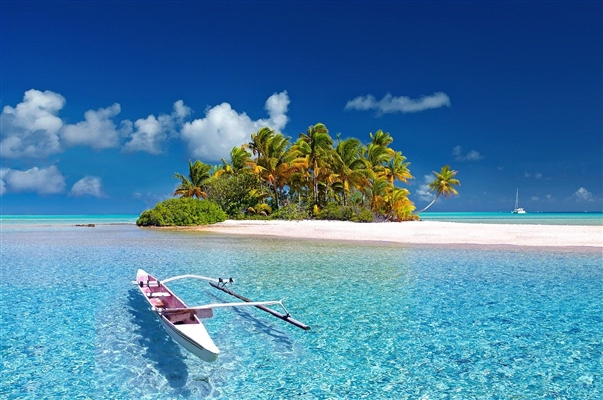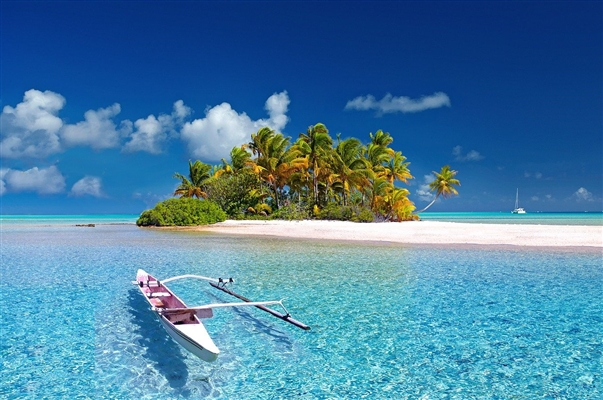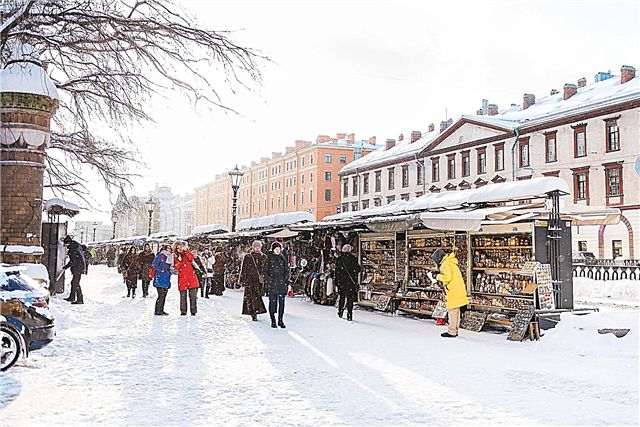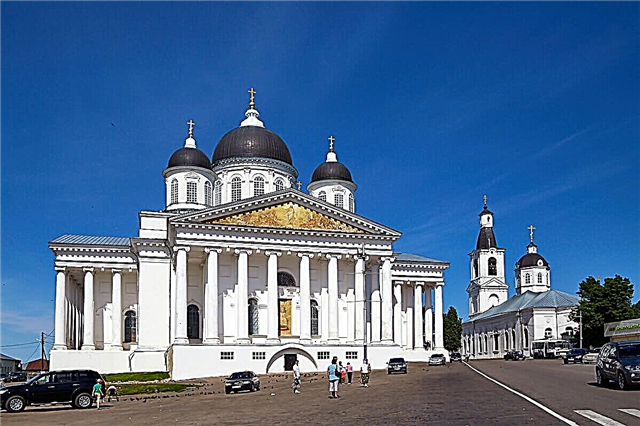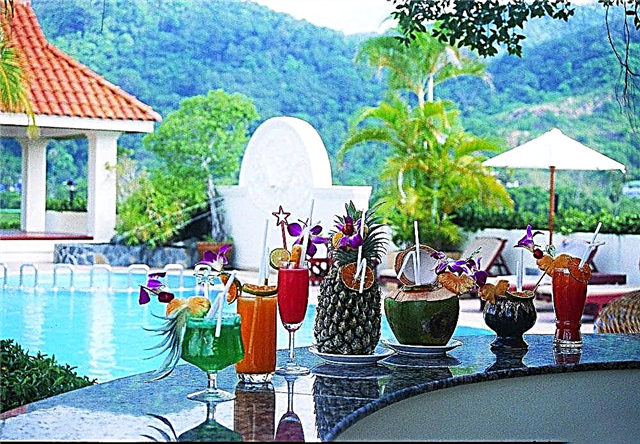Voronezh Region is not the most popular destination for domestic tourism, which is completely unfair: there are many interesting things here. There are no luxury hotels and fashionable resorts here, but the region is ideal for a quiet family vacation. Voronezh and the region are especially famous for the mass of all kinds of festivals on various topics: from Japanese animation to folk music, crafts and amateur theaters.
Due to the mild climate and the absence of sweltering heat in summer, the region is suitable for recreational tourism at the numerous recreation centers scattered along the banks of the Don. In addition, there are many Orthodox shrines on the territory, which attracts many pilgrims here. And the collections of local history museums are rich in interesting antiquities and deserve a must-see.
The most interesting and beautiful places in the region
List, photos with names and descriptions of popular attractions!
Khopersky reserve
A popular destination for ecotourists. The reserve is located on 16 thousand hectares along the 50 km of the Khopra channel. It is famous for its huge species diversity, including acclimatized species, for example, the white-tailed deer and a number of birds. We are especially proud of the preserved population of the local Red Book sterlet. To visit you will need a permit; on the territory of the reserve, tourists must strictly follow the rules.

"Divnogorie"
A mixed nature reserve: both archaeological, architectural and natural. It is located in the place where the Cretaceous deposits emerge, which form unique mountains. Pilgrims are attracted here by chalk cave churches, ecotourists - an abundance of endemic flora and diverse fauna, researchers and history lovers - Mayatskoye settlement: an ancient Khazar fortress with a large-scale necropolis.

Divnogorye is a unique tourist attraction, we recommend that you familiarize yourself with the most popular attractions of this museum-reserve.
Holy Dormition Divnogorsk Monastery
A functioning cave monastery near the village of Divnogorie, founded around 1650. Consists of an overhead part: a temple, outbuildings, a bell tower and chalk catacombs, decorated in the early Christian style. For pilgrims and ordinary tourists, there is a special excursion and pilgrimage department at the monastery: the monks will lead the group throughout the monastery, tell about the history, and show the sights.

Oldenburg Palace
Built in 1878-1887 as the residence of Princess Romanovskaya (Oldenburgskaya by her husband). In addition to the main building, there is a servants' house, a water tower and a park on the territory. The palace-castle in the Old English style does not yet have a certain status, it is under restoration. However, excursions are conducted along it, although the interior decoration is in a rather deplorable state.

Khrenovskaya stud farm
Homeland of the famous breed of Oryol trotters. Now, in addition to breeding domestic elite horses, breeding work with Arabians is being carried out here. The stud farm has its own museum dedicated to everything related to horses. And of course, you can ride his pets: on a leash for beginners, with an instructor - for experienced riders, or order a leisurely ride in a chaise.

Kostomarovsky Spassky Monastery
A functioning cave-type nunnery. It is famous for the unique architectural design of the church of Seraphim of Sarov located here: the entrance to the catacombs decorated with an arch is located under a high rock crowned with a dome. No less interesting is the Spassky Church, located between two rocks connected by a belfry at the top. The main shrine of the monastery is the Kostomarovskaya icon of the Mother of God.

Belogorsk Resurrection Monastery
The founder of the monastery, Maria Sherstyukova, independently dug over 200 meters of catacombs in the chalk rock and in 1796 became its first abbess. Later the monastery expanded, two churches were rebuilt. After being destroyed in the revolutionary years, it was abandoned, only in 2003 its revival began. Nowadays the monastery is active, here is kept a particle of the relics of its patron - Alexander Nevsky.

Kalacheevskaya cave
A man-made cave in the Cretaceous deposits. Previously it was a monastery, but has long lost its religious significance. In addition to the winding and long passages, the catacombs are famous for their graffiti. Generations of curious visitors have been noted on the smoky vaults and walls, there are inscriptions with pre-war dates, messages to descendants. A striking example of the conversion of banal vandalism into a historical heritage.

Ship-museum "Goto Predestination"
Floating Museum, it is also a working copy of the Russian battleship of Peter the Great's times. It was built in 2011-2013, now it is moored at the Petrovskaya embankment of the Voronezh reservoir. The exposition of the museum includes 733 items of nautical theme: from weapons, ship utensils and wax figures of sailors, to a collection of coins and dioramas of naval battles. The tour takes about an hour, ticket prices are symbolic.

Voronezh Biosphere Reserve
31 thousand hectares of forest-steppes, rivers, streams and swamps. The uniqueness of the reserve lies in the presence on its territory of several museums, a functioning temple and a number of tourist routes. Visitors can visit the Museum of Nature with hundreds of relevant exhibits and the Museum of the naturalist V. M. Peskov, walk along the "Hedgehog Paths", observe the life of beaver families in an experimental nursery.

Stone Steppe
A unique reserve, in which the study of human influence on soils has been carried out for a hundred years. There are centuries-old deposits here - plowed and uncultivated lands. All sights here are natural. These are landscape complexes of two gullies - Khorolskaya and Sukhoprudnaya, the Dokuchaevskoe sea (reservoir), a complex of experimental old-growth forest belts and a huge colony of funny bobak marmots.

"Kostenki"
Museum-reserve during the excavation of the Kostenki-11 site. Here is a unique complex of a dwelling of the primitive era, rebuilt from the bones of a mammoth and peculiar outbuildings of that time: five pits-storerooms. In addition, visitors can view a collection of weapons and household items from the Stone Age and sculptural reconstructions of the appearance of our ancestors, recovered from skulls from a local burial.

Lomy farm
On the site of the farm that disappeared fifty years ago, an artificial forest was first planted, and later sights created by the efforts of artists and designers appeared. For example, an artificial windbreak with 40 swings and a restored old windmill. An ethnographic song and craft festival dedicated to the Russian folk heritage is also held here in August.

"Village of the XVII - XIX centuries"
The huge museum of the city of Ertil has collected many expositions in the open air. Among them are a peasant hut, a pottery workshop, a mill, a fishing house, a black bathhouse, a mill, a beekeeper's house and other buildings dedicated to everyday life and crafts of the indicated period. The museum is interactive - you can touch a lot, try yourself in crafts and, of course, drink tea from an old copper samovar.

Manor Venevitinov
A carefully restored complex of outbuildings, residential buildings and park buildings, which previously belonged to the old Venevitinov family. The estate is fenced off with an impressive brick fence; inside there is a park with a rotunda and a pond, a residential mansion, a stable, a glacier, a human hut and so on.Inside, the interiors have been restored, and the guides will tell you about famous personalities who have visited the estate.
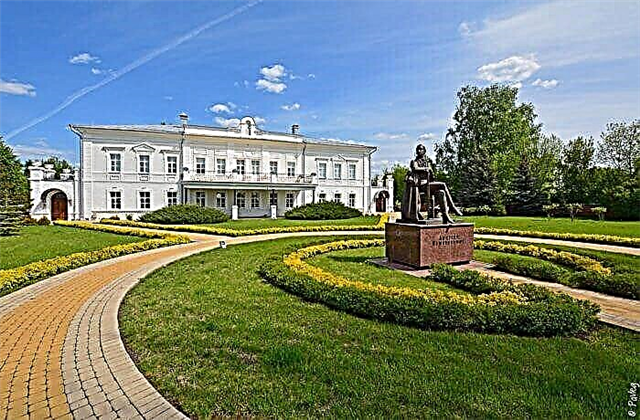
Manor of Losevs - Shatilovs - Steel von Holstein
Such a long name indicates the noble families to whom the estate belonged. The complex of a mansion, a temple and a park is located on the banks of the Usmanka River near Voronezh. After the grandiose restoration work, the estate has acquired virtually its original appearance, including all the interior interiors. You can visit the courtyard on your own, or as part of an excursion: tours from Voronezh there are very popular.

Krivoborye tract
A geological natural monument in a remote corner of the Ramon region. Stunningly beautiful landscapes, coupled with gentle sandy beaches, made the tract a favorite vacation spot for residents of the region. There is excellent fishing and an excellent beach holiday, although the savages will have to settle down: the local camp "Don" is still in the process of restoration. Care should be taken when swimming: Don is very fast here.

Even more interesting in the article about the best natural monuments of the Voronezh region.
Don Sahara
Spreading sandy desert on the border of Rostov and Voronezh regions. The combination of natural dunes with the edge of a coniferous forest adds to the picturesque place. Here is an abandoned church, in Soviet times - a warehouse of military property, one of the halls is still packed with boxes with gas masks. People come here to ride off-road vehicles on the dunes and feel the burning breath of a real desert.

Ostrogozh Museum of History and Art named after I. N. Kramskoy
The museum combines two profiles at the same time: art and local history. In the 11 halls dedicated to the history of the region, there are expositions of Scythian culture, antique furniture, porcelain, peasant clothes, a numismatic collection, a collection of propaganda posters of the Great Patriotic War and so on. In the painting hall, paintings by Kramskoy himself and a number of famous artists are exhibited: Shishkin, Aivazovsky, Repin.

Voronezh Regional Museum of Local Lore
The leading museum in Voronezh, in the funds of which there are more than 170 thousand items. The largest exposition is devoted to the history of the region since the Stone Age, the second largest is a collection of coins, banknotes and stamps. There is an armory and a porcelain room; the collection of insects, including butterflies, deserves special attention. Often the museum organizes exhibitions of collections from other regional institutions, musical and literary evenings.

Blagoveshchensky cathedral
Temple in the Russian-Byzantine style in the center of Voronezh. The height of 97 meters made it the tallest Orthodox building; in terms of area, it took the third place. The building is new, construction work was completed in 2009. The most visited cathedral in the city, admission is free for tourists, however, it is recommended to observe religious norms. It is also famous for its belfry with a unique six-tone bell.

Uspensky Admiralty temple
The church is a little younger than Voronezh itself, founded in 1594. Initially wooden, after 1703 it was rebuilt into a stone one and has retained its appearance to this day. Here the ships of the Petrine fleet were blessed; a note handed by the emperor is kept among the temple relics. The temple impresses with its elegant appearance and rich decoration inside. Around there is a park with a huge rose garden and comfortable gazebos.

Monument "Rotunda"
Part of the building of the regional hospital, almost destroyed by the shelling of the Nazis in the Great Patriotic War. They did not restore the building, as a memory of the terrible events of the war, it was not even possible to strengthen it to prevent further destruction. You should be careful to inspect the attraction: in 2008, a part of the dome collapsed, the monument itself is considered emergency for natural reasons.

Alekseevo-Akatov Monastery
Former monastery for women, now functioning for women. After the revolution, it was in decline, except for the bell tower and the temple, all buildings were destroyed, the interior was plundered and damaged. The current murals and iconostasis are a remake, everything was restored according to old photographs. A place of veneration for the first Russian saint Alexy and a popular pilgrimage tourism destination.

Seraphim-Sarov Monastery
A new monastery built on the site of General Solovtsov's estate in 1995. Pilgrims are attracted here by a healing spring with a font dedicated to the icon of the Mother of God "Inexhaustible Chalice", which has the power to heal alcoholism and a number of other shrines. You can get there by personal transport along the Voronezh-Saratov highway or by bus to Borisoglebsk: at the turning point there is a cross with a pointer to the monastery.

Chesme stud farm
The tribal factory of Oryol trotters with a hippodrome, where horses are trained and races are held. The hippodrome is equipped with lounges, a buffet and other amenities. The complex itself is an architectural monument, most of the buildings have survived from the moment of opening in their original form. During the excursion, you can see the stables, learn about the peculiarities of breeding and growing the famous Russian breed.

Novovoronezh NPP
Here you can get acquainted with the aspects of the NPP operation, walk through the existing and under construction buildings. However, the facility is secure, 45 days before the visit, you must submit an application, and from an organization and a group of up to 20 people. The information center of the station has its own museum with expositions dedicated to nuclear energy and the station-sponsored search and historical detachment "Peresvet".

Monument to a kitten from Lizyukov street
Monument in honor of the most famous cartoon citizen of Voronezh. Lizyukov Street is long and confusing to find a monument is not easy, it is better to ask the locals. And in order to take a picture with a kitten and a crow sitting on a tree, you will most likely have to stand in line - a very visited place. Unfortunately, the sculpture is not always in its original form: the cat's wire whiskers are often broken off for souvenirs.

Festival "Watermelon Paradise - Petropavlovsk Territory"
Annual gastronomic festival in the village of Petropavlovka. Held at the end of September since 2014. Local farmers organize a grand melon fair combined with a cultural program. Folk song groups perform, shopping arcades, attractions, and free tasting is obligatory. And, of course, a competition for the largest watermelon and an exhibition of sculptures carved from this berry.

Platonov Arts Festival
A grandiose theater and literary festival, divided into several projects: street theater, literature, art exhibitions, world music, classical theater and academic music. It takes place in early June and gathers spectators and participants from all over the world. The culmination of the event is the presentation of the Platonov Prize to artists who have contributed to Russian culture.



